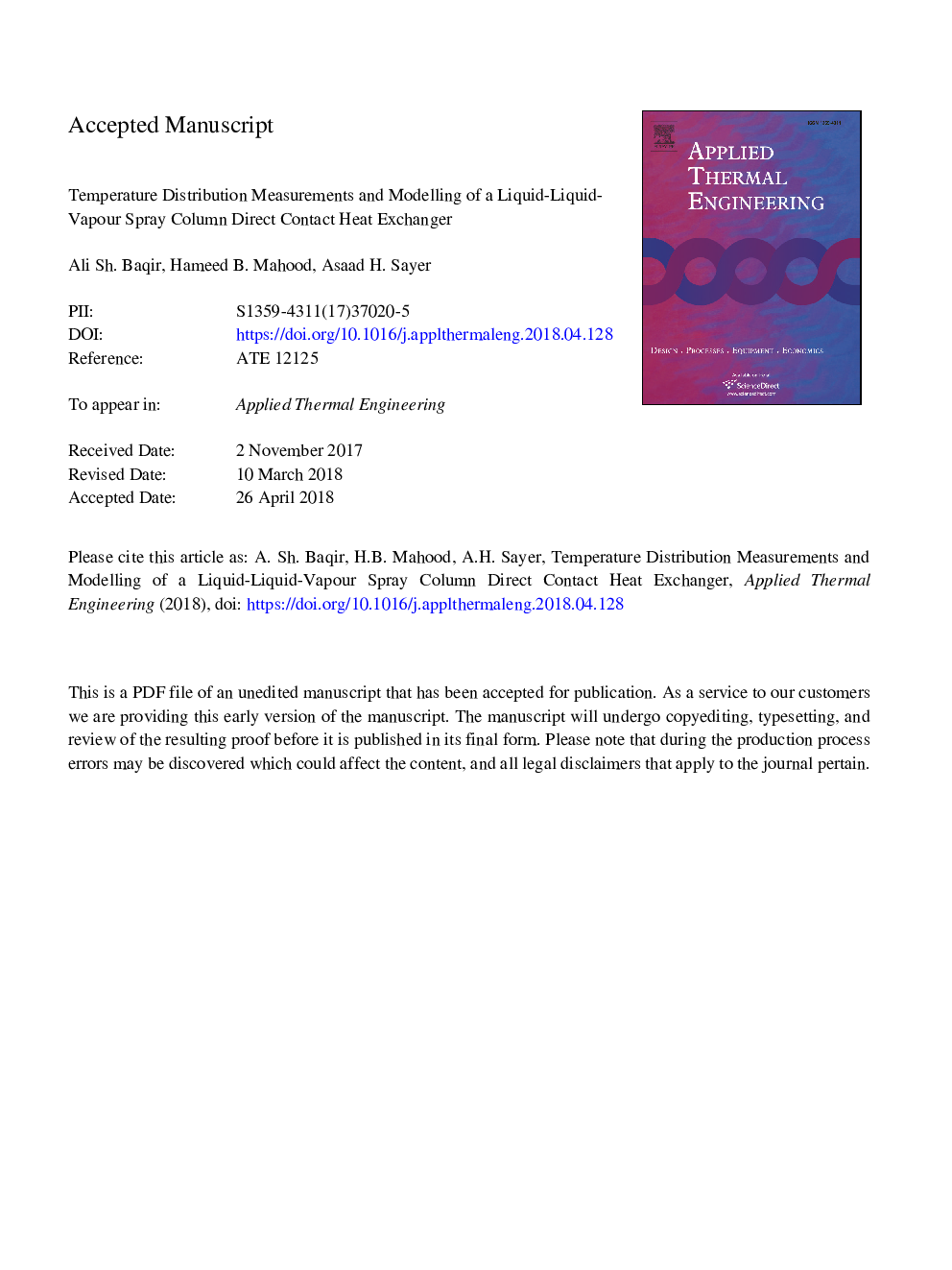| Article ID | Journal | Published Year | Pages | File Type |
|---|---|---|---|---|
| 7045180 | Applied Thermal Engineering | 2018 | 26 Pages |
Abstract
This study investigates the temperature distribution of a liquid-liquid-vapour three-phase direct contact heat exchanger, both experimentally and theoretically. The experimental investigation was conducted using a Perspex column with an internal diameter of 10â¯cm and 100â¯cm height. Liquid pentane at its saturation temperature and warm water were used in the dispersed phase and continuous phase respectively. Various dispersed phase flow rates (10,15&20L/h) and continuous phase flow rates (10,20,30&40L/h) were tested using three different sparger configurations (7,19&36nozzles) and two different nozzle diameters (1 & 1.25â¯mm). The results showed that the temperature of the continuous phase decreased with the height of the heat exchanger from its inlet at the top towards its outlet at the bottom. This behaviour was entirely opposite to the dispersed phase that flows counter currently with the continuous phase in the heat exchanger. For the same sparger and constant continuous phase flow rate (Qc), the outlet temperature of the continuous phase was inversely affected by the dispersed phase flow rate (Qd); while decreasing the nozzle numbers in the sparger led to a decrease in the outlet temperature of the continuous phase. Furthermore, the initial temperature of the continuous phase in terms of the Jakobs number (Ja) was found to have a significant positive impact on outlet temperature: the higher the Ja, the higher the outlet temperature. The analytical model had an acceptable agreement with the experimental measurements.
Related Topics
Physical Sciences and Engineering
Chemical Engineering
Fluid Flow and Transfer Processes
Authors
Ali Sh. Baqir, Hameed B. Mahood, Asaad H. Sayer,
